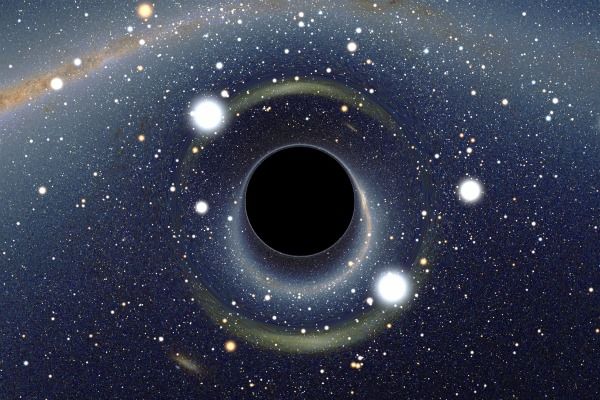Explosion of ancient supermassive star contradicts our understanding of space

Simulated view of a black hole in front of the Large Magellanic Cloud. (Image credit: Alain R. | Wikimedia Commons)
Though scientists have suspected for a while that a giant black hole lurks at the center of our galaxy, they still can't say for sure it's the explanation for the strange behavior observed there. Now researchers are closer than ever to being able to image this region and probe the physics at work – potentially shedding light on the great conflict between the theories of general relativity and quantum mechanics.
At the heart of the Milky Way, astronomers see some wacky things. For example, about a dozen stars seem to be orbiting some invisible object. One star has been found to make a 16-year orbit around the unseen thing, moving at the hard-to-imagine speed of about 3,000 miles (5,000 kilometers) a second. By comparison, the sun moves through space at a comparatively glacial 137 miles (220 kilometers) a second.
Based on the laws of motion, these dozen stars' orbits should be caused by the gravitational pull of some massive object in the center of the galaxy. Yet telescopes observe nothing there.
"The really important thing is that all the orbits have a common focus," astrophysicist Mark Reidof the Harvard-Smithsonian Center for Astrophysics said during the recently concluded April 2012 meeting of the American Physical Society."There's one point on the sky, and there's nothing you can see on images at this position."
More:
https://essanews.com/explosion-of-ancient-supermassive-star-contradicts-our-understanding-of-space,6985019429562497a
